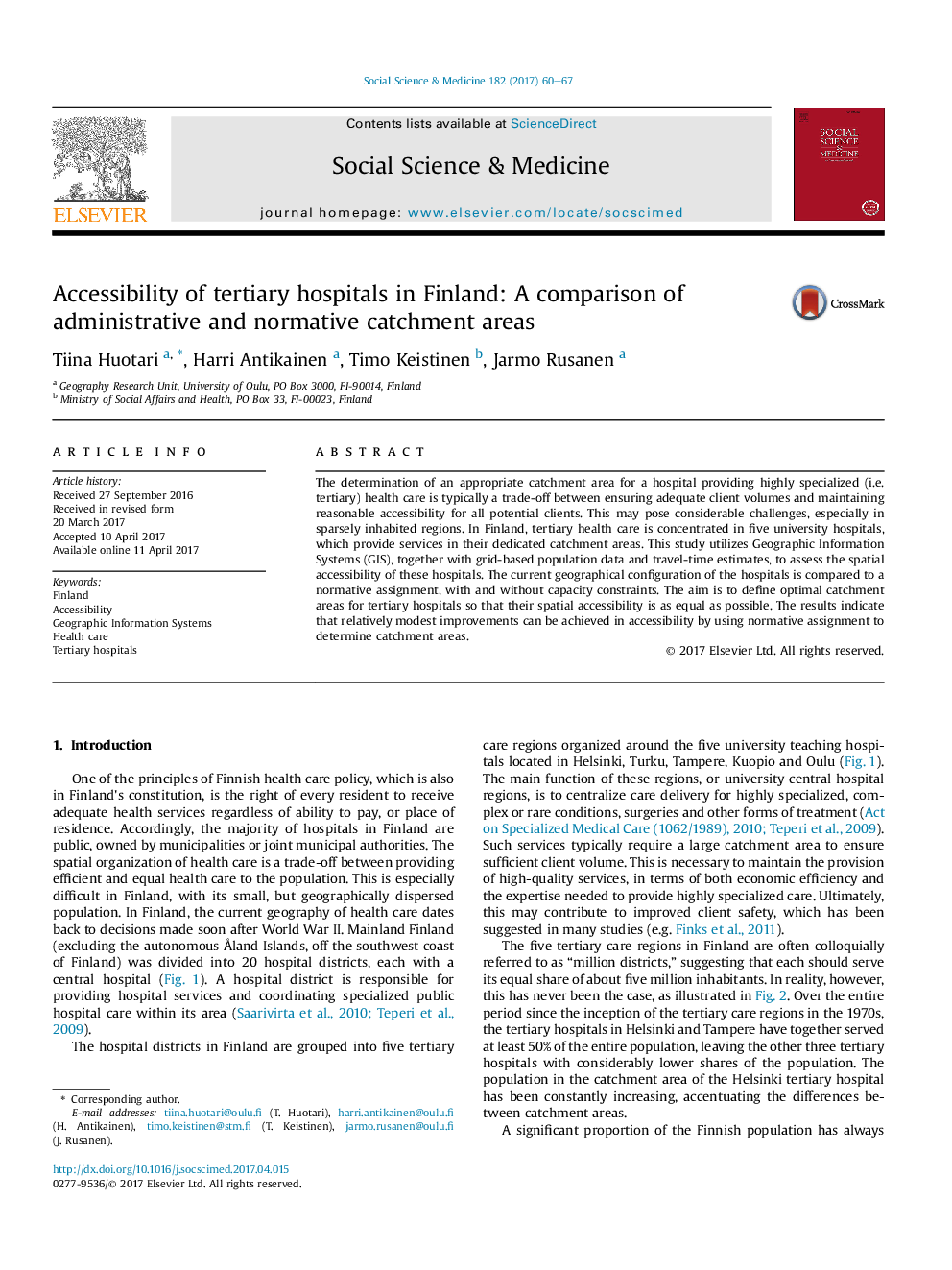| Article ID | Journal | Published Year | Pages | File Type |
|---|---|---|---|---|
| 5046531 | Social Science & Medicine | 2017 | 8 Pages |
â¢Traditional hospital districts are not always optimal in terms of accessibility.â¢Administrative borders are reconsidered in terms of Finnish health care reform.â¢Population grid data facilitate hospital catchment determination.â¢Limited improvements in spatial accessibility were achieved by optimization.
The determination of an appropriate catchment area for a hospital providing highly specialized (i.e. tertiary) health care is typically a trade-off between ensuring adequate client volumes and maintaining reasonable accessibility for all potential clients. This may pose considerable challenges, especially in sparsely inhabited regions. In Finland, tertiary health care is concentrated in five university hospitals, which provide services in their dedicated catchment areas. This study utilizes Geographic Information Systems (GIS), together with grid-based population data and travel-time estimates, to assess the spatial accessibility of these hospitals. The current geographical configuration of the hospitals is compared to a normative assignment, with and without capacity constraints. The aim is to define optimal catchment areas for tertiary hospitals so that their spatial accessibility is as equal as possible. The results indicate that relatively modest improvements can be achieved in accessibility by using normative assignment to determine catchment areas.
